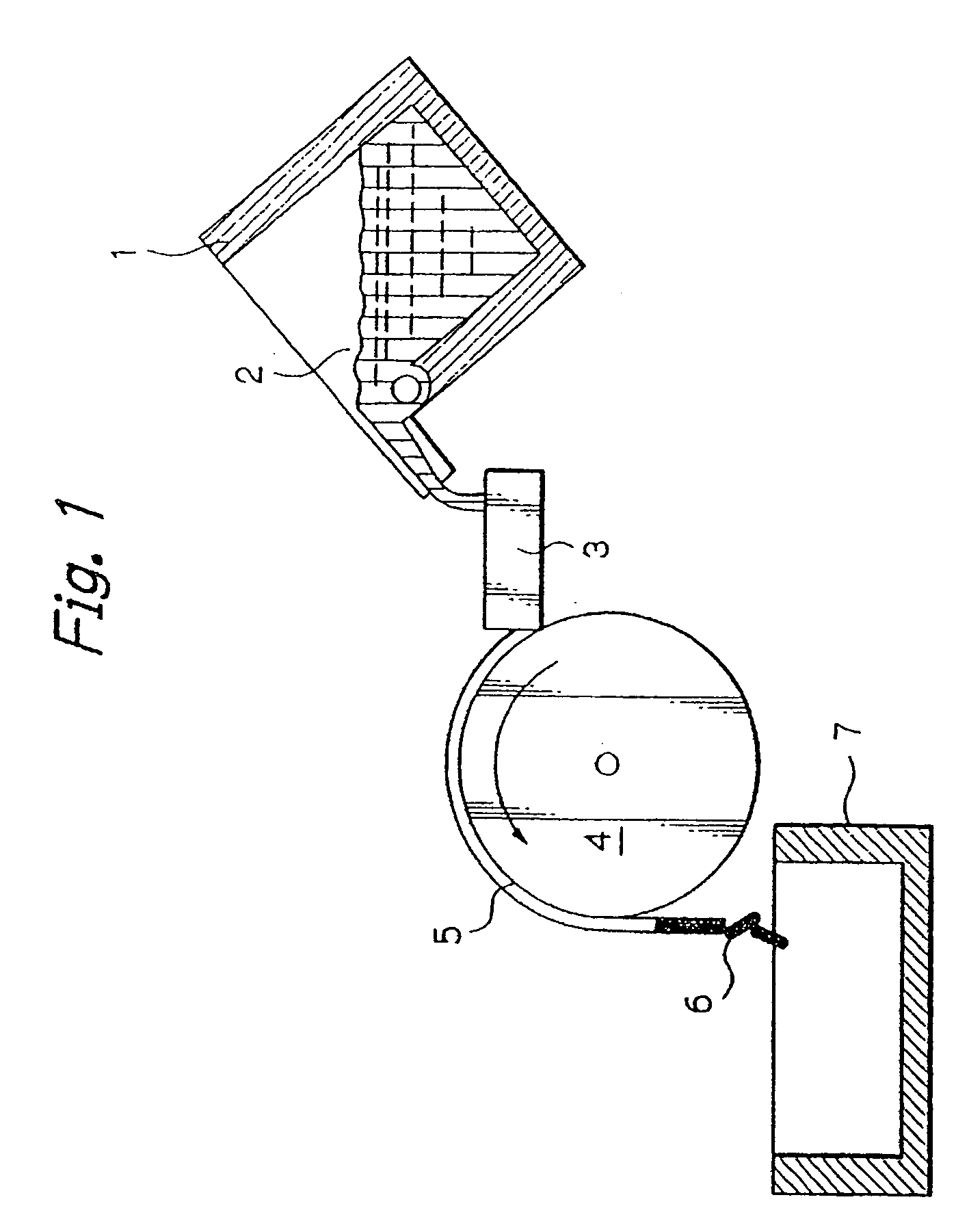Refractory material for casting a rare-earth alloy and its production method as well as method for casting the rare-earth alloys
a rare-earth alloy and refractory material technology, applied in the direction of muffle furnaces, charge manipulation, furnaces, etc., can solve the problems of reducing the volume fraction of the r-rich phase, affecting the crushability of the alloy, and unsatisfactory properties, so as to improve the melt flow
- Summary
- Abstract
- Description
- Claims
- Application Information
AI Technical Summary
Benefits of technology
Problems solved by technology
Method used
Image
Examples
example 1
[0069] Alumina, mullite and silica were blended to provide the refractory construction as described in Table 1. A binder in 15 weight parts was blended to 100 weight parts of the resultant fiber mixture. The fiber mixture and the binder were sufficiently mixed to provide a slurry mixture. It was then shaped by a press machine into material in the form of a trough-shaped tundish. After hardening by natural drying, heat treatment was carried out at the heat-treating temperature shown in Table 1. The tundish 1 has a shape shown in FIG. 3. The dimension of the respective parts was: 360 mm of width (w), 125 mm of height (h), 900 mm of length (l), 100 mm of depth of the melt-flowing portion (h1), 310 mm of the upper width (w1), and 300 mm of the bottom width (w2).
[0070] In Table 1 are shown the chemical analysis results of Al2O3 and SiO2, bulk density, and the maximum thermal conductivity at 1200 to 1400° C. In addition, a sample was taken from the tundish and was ignited at 1400° C. for...
example 2
[0075] A tundish consisting of the same refractory material as in Example 1 was used in the same strip-casting method as in Example 1 to cast a Mm (misch metal) Ni-based alloy (1450° C. of tapping temperature). The melt flowed normally on the tundish without solidifying on the tundish. The flowing coefficient at this time was 0.67.
[0076] When the condition of the tundish was examined after completion of casting, neither discoloring nor foreign matters suggesting its reaction with the melt, were recognized.
example 3
[0077] A tundish consisting of the same refractory material as in Example 1 was used in the same strip-casting method as in Example 1 to cast an Sm Co-based alloy (1450° C. of tapping temperature). The melt flowed normally on the tundish without solidifying on the tundish. The flowing coefficient at this time was 0.71.
[0078] When the condition of the tundish was examined after completion of casting, reaction with the melt was not recognized.
PUM
| Property | Measurement | Unit |
|---|---|---|
| density | aaaaa | aaaaa |
| temperature | aaaaa | aaaaa |
| temperature | aaaaa | aaaaa |
Abstract
Description
Claims
Application Information
 Login to View More
Login to View More - R&D
- Intellectual Property
- Life Sciences
- Materials
- Tech Scout
- Unparalleled Data Quality
- Higher Quality Content
- 60% Fewer Hallucinations
Browse by: Latest US Patents, China's latest patents, Technical Efficacy Thesaurus, Application Domain, Technology Topic, Popular Technical Reports.
© 2025 PatSnap. All rights reserved.Legal|Privacy policy|Modern Slavery Act Transparency Statement|Sitemap|About US| Contact US: help@patsnap.com



